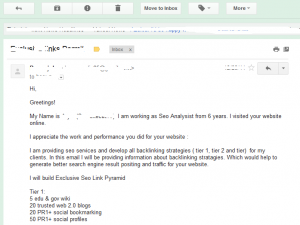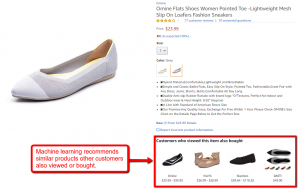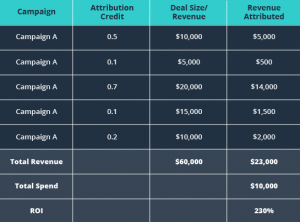I have never been a fan of using the automated direct message feature on Twitter. In fact, I downright hate it. How much? I will unfollow 90% of those who send me an automated direct message within minutes of my reading it.
I often finding myself challenging the norm. I’m always looking at ways to leverage the tools at our disposal in a different way, to achieve a different goal. Twitter’s direct message feature may be one of the best social media tools we have at our fingertips: it provides direct access to followers which could number in the 1000s even for a small brand.
As I see it, the problem with the automated direct message isn’t the use of it, it’s HOW it’s used.
Auto DMs tend to fall into one of two general categories:
- The simple ‘Thank you for following me”
 – This one may seem fine, but how unsocial is it to send an automated greeting to someone you just met? At least make it look like you took the time to personally thank me.
– This one may seem fine, but how unsocial is it to send an automated greeting to someone you just met? At least make it look like you took the time to personally thank me.
- The ‘Please follow me over on Facebook, LinkedIn, sign up for my email, you may be interested in, buy my crap’
 – I get this is an opportunity to drive web traffic, promote your wares or get an email address but at least send me welcome note and ask how I am first. If I walked into your retail store and you asked for my email address or tried to sell me something without saying hello first, I’ll exit stage left…immediately. At least take the time to be social, even for just a moment.
– I get this is an opportunity to drive web traffic, promote your wares or get an email address but at least send me welcome note and ask how I am first. If I walked into your retail store and you asked for my email address or tried to sell me something without saying hello first, I’ll exit stage left…immediately. At least take the time to be social, even for just a moment.
But What If?
What if automated DM’s were more like follow up emails sent to subscribed followers?
What if we used them differently?
What if we treated our followers the same way we do when they fill out a contact form, sign up for a newsletter or get a free download?
What if the content they received wasn’t a request but us giving something? Maybe a piece of advice? Maybe a free download without requesting an email address?
What if the DM provided something of value to them?
Would you accept them or still see them as spam, insincere, rude or annoying?
The Automated Direct Message As An Effective Marketing Tool
To make them an effective marketing tool three things must change:
Expectation. When we sign up for a download, fill out an entry form at an event or sign up for anything, we KNOW we’re being added to an email list. We expect that. We know we’ll receive an email a few days later saying thank you. We know we’ll likely receive offers and requests (hopefully mixed in with some valuable content). So what is different between signing up for an email list and following someone on Twitter?
“….when you sign up for an email list, you expect to be emailed. It’s intrinsic to the nature of that transaction. When you follow someone on Twitter, though, your purpose isn’t to be contacted privately – it’s only to see what they publicly post. Receiving a DM isn’t necessarily part of the equation, so it can seem a little invasive, or annoying. (You already get promotional messages in your email inbox – do you really want them showing up in every one of your other inboxes all across the Internet?)”
– Tom over at Team Edgar in response to a discussion we had a few weeks back on an older article on Twitter’s change in its DM rules.
I agree completely with the reason we follow someone isn’t to provide private, targeted access but given the pervasive nature of them, I think we EXPECT to be contacted privately.
Perception. Direct messages are so maligned, even if used to provide value, they would be ignored or result in the inevitable ‘unfollow’.
Side note: If you scroll back to the top, you’ll notice I said “I will unfollow 90% of those who send me one within minutes of my reading an auto DM.” What about the other 10%? I have received messages which resonated, provided value or, based on the source, weren’t seen as spam.
Given my own approach and as much as I detest them, I think perception can be changed.
Personalization. Even once the expectation of receiving and perception of DMs changes, there is the small issue of tailoring the message. When it comes to email, we can easily segment to tailor our message. We can personalize each email. You know when you receive them they are automated but at least they address and speak to you. There still needs to be a tool which enables this functionality with a minimum of input on our part to make it effective.
There are a few tools already available and designed to send automated DMs but I don’t think any have the same functionality of most email or CRM tools (please let me know if any do).
A Final Thought
Twitter’s direct message feature holds some interesting potential as an effective marketing tool. It’s a huge opportunity to establish a relationship if / when used properly. If it will ever be accepted is a whole other story as a viable or trusted. For now, I don’t seem myself using it on a broad, automated level. I may starting playing with it on an manual basis similar to how I respond to all requests to connect on LinkedIn so don’t be surprised if you follow me and I reach out to you. It is after all, social behavior and an opportunity to build a relationship and that’s the real value of social media.
What is your opinion on the use of direct or automated direct messages?
Do you see a potential for using them?
Digital & Social Articles on Business 2 Community(24)








